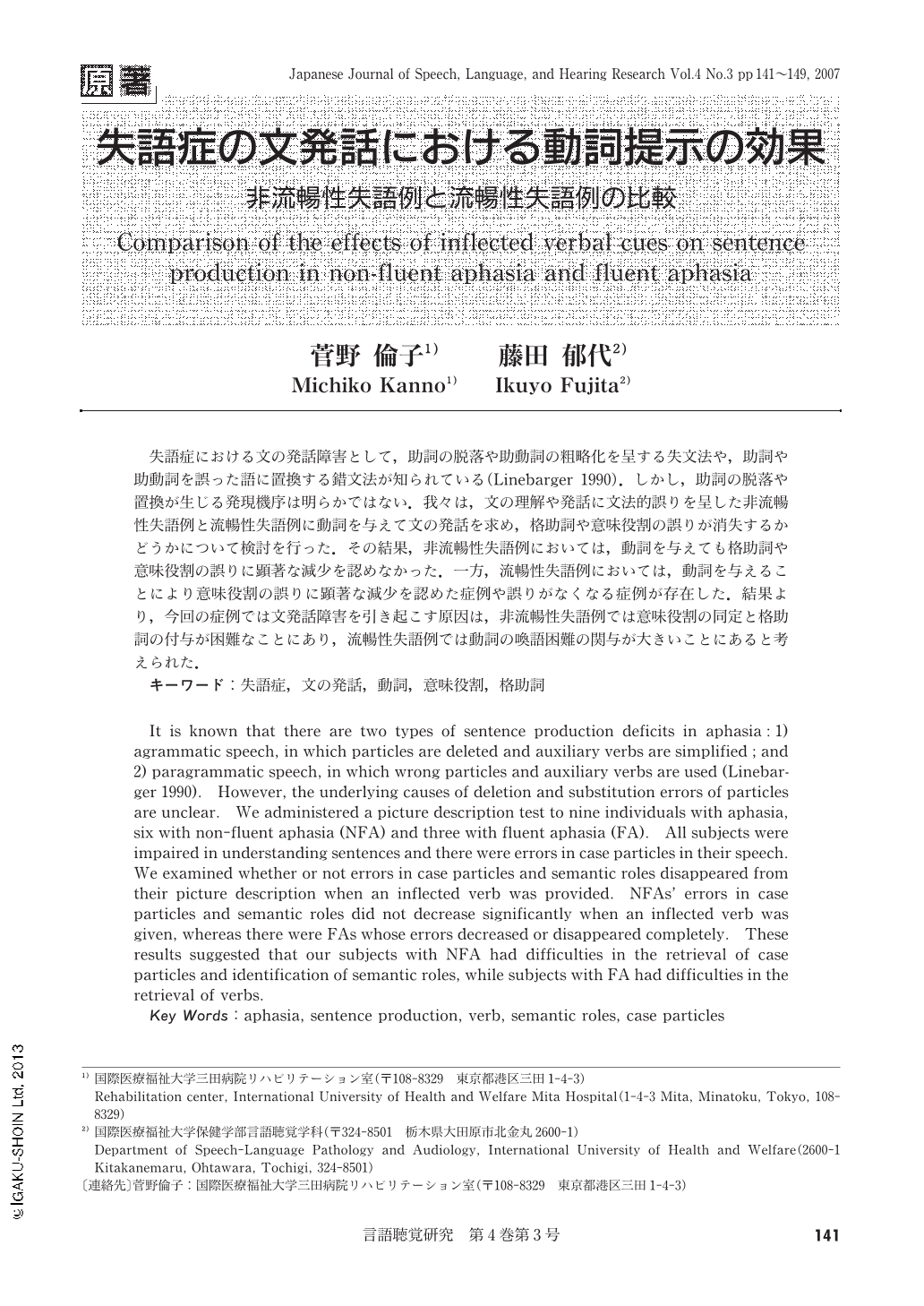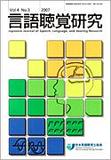Japanese
English
- 有料閲覧
- Abstract 文献概要
- 1ページ目 Look Inside
- 参考文献 Reference
失語症における文の発話障害として,助詞の脱落や助動詞の粗略化を呈する失文法や,助詞や助動詞を誤った語に置換する錯文法が知られている(Linebarger 1990).しかし,助詞の脱落や置換が生じる発現機序は明らかではない.我々は,文の理解や発話に文法的誤りを呈した非流暢性失語例と流暢性失語例に動詞を与えて文の発話を求め,格助詞や意味役割の誤りが消失するかどうかについて検討を行った.その結果,非流暢性失語例においては,動詞を与えても格助詞や意味役割の誤りに顕著な減少を認めなかった.一方,流暢性失語例においては,動詞を与えることにより意味役割の誤りに顕著な減少を認めた症例や誤りがなくなる症例が存在した.結果より,今回の症例では文発話障害を引き起こす原因は,非流暢性失語例では意味役割の同定と格助詞の付与が困難なことにあり,流暢性失語例では動詞の喚語困難の関与が大きいことにあると考えられた.
It is known that there are two types of sentence production deficits in aphasia:1) agrammatic speech, in which particles are deleted and auxiliary verbs are simplified;and 2) paragrammatic speech, in which wrong particles and auxiliary verbs are used (Linebarger 1990). However, the underlying causes of deletion and substitution errors of particles are unclear. We administered a picture description test to nine individuals with aphasia, six with non-fluent aphasia (NFA) and three with fluent aphasia (FA). All subjects were impaired in understanding sentences and there were errors in case particles in their speech. We examined whether or not errors in case particles and semantic roles disappeared from their picture description when an inflected verb was provided. NFAs' errors in case particles and semantic roles did not decrease significantly when an inflected verb was given, whereas there were FAs whose errors decreased or disappeared completely. These results suggested that our subjects with NFA had difficulties in the retrieval of case particles and identification of semantic roles, while subjects with FA had difficulties in the retrieval of verbs.

Copyright © 2007, Japanese Association of Speech-Language-Hearing Therapists. All rights reserved.


